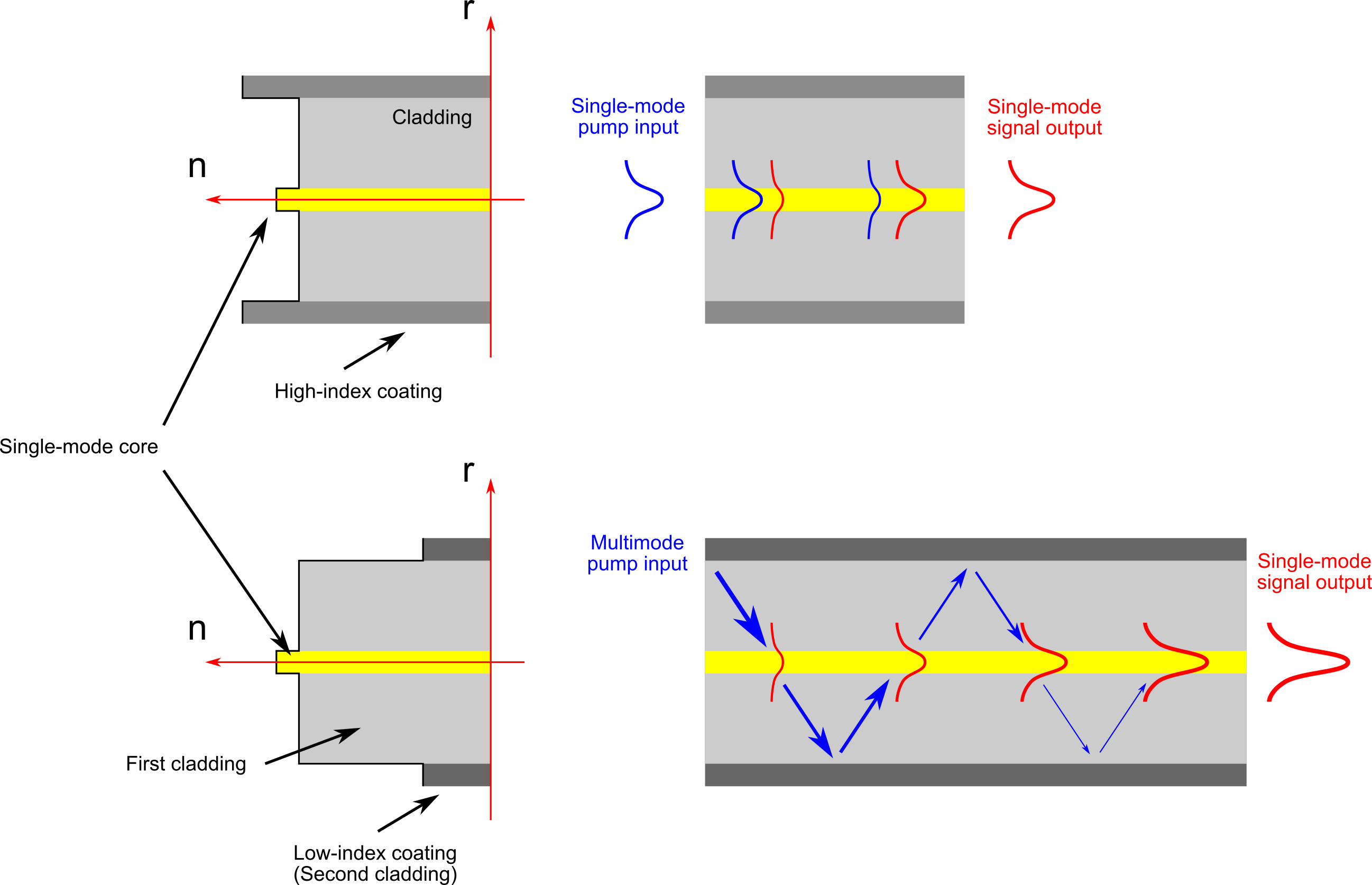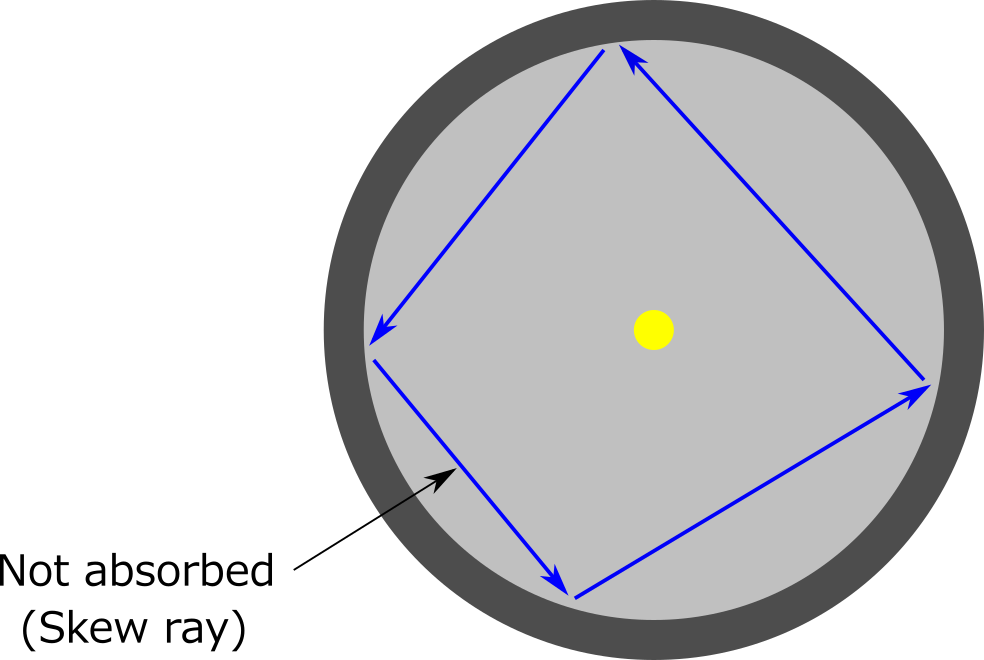JAPANESE / ENGLISH

JAPANESE / ENGLISH
Last updated on 05/7/2021
Fiber lasers and fiber amplifiers are so far always optically pumped, and generally speaking, there are two types of optical pumping schemes – core pumping and cladding pumping.
Figure 1 schematically explains these two pumping schemes. In the core-pumping scheme, the pumping light source is single mode and launched to the single mode core to amplify the signal, and the amplified signal is also single mode. The refractive index of the polymer coating around the cladding is set higher than that of the cladding, such that light guidance in the cladding is prevented.

Figure 1: Core pumping (up) and cladding pumping (down)
In the cladding-pumping scheme, the pumping light source is multimoded and launched to the entire cladding (referred to as the first cladding). The first cladding is further surrounded by the second cladding with a lower refractive index, such that the pump launched to the first cladding is guided by total-internal reflection. The pump interacts with the signal when the light crosses the core, and the signal maintains its single modeness during amplification, because the signal core is single mode. The fibers used for cladding pumping are often called as double-clad fibers, as there are two claddings (first and second cladding).
Optical fibers typically possesses an axially symmetric circular shape, however, it causes is a major issue when cladding pumping scheme is employed. Some of the pump rays launched to the first cladding does not cross the core due to the very high degree of symmetry in the fiber structure, and as a result, the pump is not efficiently absorbed. It is called a skew ray.

Figure 2: Circular cladding and skew ray.
This skew ray can be mitigated by breaking circular symmetry in the fiber structure, as schematically shown in Figure 3. Typical examples are offset core , D-shaped cladding, or octagonal (or other polygonal) cladding . Stress-applying parts for polarization-maintaining fiber also help break the circular symmetry, and skew ray can be mitigated even with a circular first cladding . Most fibers used in cladding pumping scheme employs such a “mode-mixing” means for efficient pump absorption.

Figure 3: Mitigation of skew ray in cladding-pumped fiber.
The use of core-pumping scheme helps shorten the fiber length, as the overlap between the core and pump is large. Many ultrafast lasers/amplifiers are core pumped, in order to mitigate pulse distortion arising from fiber chromatic dispersion.
On the other hand, the use of cladding-pumping scheme helps increase the output power from the amplifiers/lasers, as a much larger pump power can be launched to the entire cladding. Many high-power lasers/amplifiers are therefore cladding pumped, and low-cost multimode pump LDs are used as the pump source.